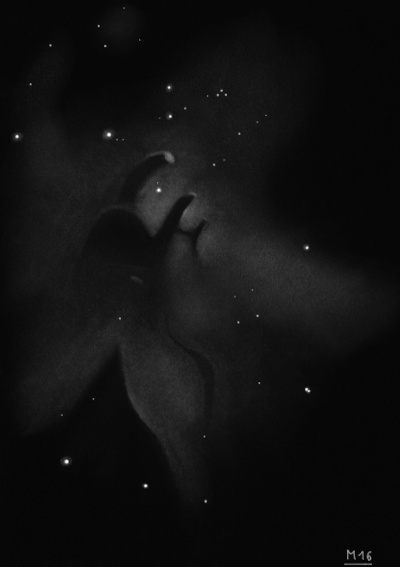Eagle Nebula
Eagle Nebula

Philippe Loys de Chéseaux discovered M16 = NGC 6611 = h2006 in 1745-46 and reported it as a star cluster to the French Academy of Sciences. Charles Messier independently found it on 3 Jun 1764 and stated "appears nebulous in a small telescope" and "enmeshed in a faint glow" but this appearance was due to the poor resolution of the stars in his telescope - not the involved nebulosity. William Herschel, observing on 30 Jul 1783 with his small 20-foot (12-inch reflector), described "Large stars with small ones among them; within a small compass I counted more than 50, and there must be at least 100 without taking a number of straggling ones, everywhere dispersed in the neighborhood." So, Herschel didn't note any nebulosity either.
Isaac Roberts discovered the nebulosity in the "Eagle Nebula" on a photographic plate taken in 1894 and it was catalogued as IC 4703. But Wolfgang Steinicke claims that Étienne Léopold Trouvelot made a visual discovery of the nebulosity in 1876 with the 26-inch refractor at the USNO! Robert Innes, observing in 1914 at the Union Observatory in Johannesburg, reported "with the 9-inch refractor the nebula is just visible and it fills the perimeter of the cluster with faint extensions beyond."
300/350mm - 13.1" (8/17/85): a thin dark "finger" extends towards the cluster, positioned just south and beyond the two bright mag 9 stars near the center. This is an extension of the wider projection seen previously several times and which is better defined along the south edge.
13.1" (8/15/82): the "Eagle Nebula" is a fairly bright 30' nebulosity in a striking outstretched eagle shape with a bright scattered cluster superimposed. There is a considerable contrast gain to the nebulosity using a UHC or OIII filter. With a UHC filter, a dark projection (called the "Star Queen") enters on the SE edge of the nebula and extends inward to the west. The cluster members surrounding the "head" of the eagle include ten mag 8-10 stars and a bright pair of mag 8.5 stars (8.2/8.8 at 27"). A dark triangular wedge is visible off the north side.
13.1" (5/26/84): dark protrusion fairly easy at 88x.
Notes by Steve Gottlieb